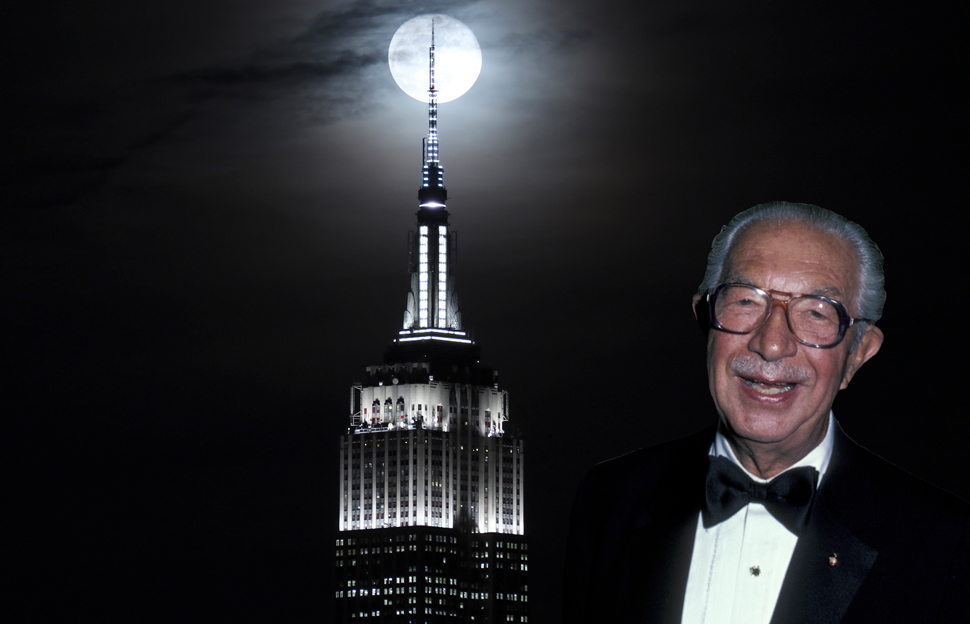Trending
An insider’s guide to real estate syndication
How the popular investment model works, and who you need to know to get it done

TRD Special Report:When the equity for what would become New York City’s tallest residential skyscraper came together, it looked less like a partnership than a billionaire boys club.
More than 200 ultra-high-net-worth investors crowded into the capital stack for a piece of 432 Park Avenue, CIM Group and Macklowe Properties project that sought to oust One57 as the city’s priciest condominium.
Over a frenetic three weeks in 2012, Citibank raised $400 million from more than 200 clients – a collection of Latin American, Asian and European investors who pitched in an average of $2 million each.
“432 Park was compelling given the location, the partners and the attractive cost basis,” said Daniel O’Donnell, who oversees private equity and real estate research and management in Citi’s private banking division. “It was a risk of course,” he said – the bank usually gets involved once “the land’s locked up, entitlements are in place, and the permits are far along.”
The Citi unit has handled over $11 billion in commitments from investors in syndications, O’Donnell said, but rarely ever had equity been syndicated at such scale, both in terms of the size of the tower and its investor pool.
Manhattan isn’t an easy place to do deals. Land prices remain the highest in the country, and banks are insisting that buyers put more skin in the game. To get the necessary funds, buyers are increasingly turning to syndication, tapping family, friends, family offices, institutional money and many other sources to get the cash to close. And for investors craving a piece of the action without the headache and spotlight that comes with being the lead buyer, syndication offers a mask.
These quiet investors “want to pass by a brick-and-mortar building in a car after dinner in the city,” said Silverback Development’s Josh Schuster, “and say they own a piece of it.”
But it’s not painless. Having several dozen or even hundreds of investors in a deal can make it hard to move quickly, and increases the risks of infighting. To handle syndication’s challenges, New York players employ a phalanx of lawyers, private-placement and mortgage brokers, and other assorted hustlers, all seeking to profit off of this it-takes-a-village approach to the skyline.
Just taking inventory

Harry Helmsley and the Empire State Building (Credit: Getty Images)
432 Park calls to mind one of the largest investor groups ever assembled for a real estate deal: the 1961 purchase of the Empire State Building.
Harry Helmsley referred to his properties as “my children,” and he was obsessed with growing his brood. Once, during a party at the Rainbow Room, Helmsley was caught staring out the window, when someone approached him and asked him what he was doing.
“Just taking inventory,” he replied, according to Tom Shachtman’s seminal book on the industry, “Skyscraper Dreams.”
Helmsley built his empire through syndication, a technique his longtime collaborator, Larry Wien, pioneered in the 1930s. The duo went from putting together deals for modest Upper Manhattan multifamily buildings to trophy commercial properties such as the Graybar Building, the Plaza Hotel and the Equitable Building throughout the 1960s and ‘70s. Helmsley was the scout – his genius lay in spotting a property’s “romance,” its unrealized value. Wien, maternal grandfather to current Empire State Realty Trust CEO Anthony Malkin, organized the syndication.
To buy the world’s most famous skyscraper in a record-breaking $65 million deal, Helmsley, Wien and Wien’s son-in-law, Peter Malkin, raised $33 million from more than 3,000 investors, each chipping in about $10,000.
“So you get a group together, it might require $10,000 and $20,000. Now, whatever I’m doing is really the same thing with a couple of noughts added to the end,” Helmsley once said, according to his obituary in the New York Times. “Deals get bigger as you have more confidence.”
Norman Sturner, founder of Murray Hill Properties, was also a major proponent of syndication in the 1980s and 1990s. He corralled a group of dentists and doctors who pitched in around $10,000 each for property acquisitions.
The landscape for the model and the interest in it has changed dramatically since then.
“There were two [syndicating] funds in the Helmsley era,” said Ira Zlotowitz, CEO of mortgage brokerage Eastern Union Funding. “Now there are 150 [institutional] funds alone that we’re involved with.”
Squad goals
(Editor’s note: This article focuses on equity syndication. Debt syndication, in which mortgage deals involve a pool of lender participants, now occurs far more frequently than equity syndication and often on a larger scale. The lender on a refinancing or construction loan for a skyscraper tends to hold the senior financing on its balance sheet and syndicate out subordinate portions to other lenders.)
To understand the ins and outs of syndication, The Real Deal spoke to over two dozen developers, lawyers, brokers and other investment professionals for this story.
What’s clear from these conversations is that syndication takes place in every tier of the market, from a modest site in deep Brooklyn to Class A Manhattan towers.
“It’s a legitimate way to raise additional capital – to stretch a dollar,” said M&T Bank’s George Doerre.
“Clients are syndicating every sexy asset right now,” said Evan Hudson, a partner at Duval & Stachenfeld. Middle-market acquisitions tend to involve the most participants, because “these funds and family offices can’t do the smaller deals,” said Newmark Knight Frank’s David Behin.
Among the most active syndicators are Lightstone Group, DHA Capital, Silverback Development, Heritage Equity Partners, Alchemy Properties, Slate Property Group, Emerald Equity Group, Kent Swig and Yair Levy. And then there’s the Brooklyn Hasidim, with the likes of Yoel Goldman and Simon Dushinsky using the model to establish empires in the borough.
Although developers such as Gary Barnett, Ziel Feldman and Steve Witkoff also construct complex capital stacks, they generally tap a smaller pool of investors that contribute bigger chunks of equity. Such deals include Witkoff and Michael Ashner’s $250 million purchase of 701 Seventh Avenue in 2012; a Witkoff-led group’s $654 million purchase of the Park Lane Hotel in 2013; and Bizzi & Partners, New Valley and Shvo’s $185 million purchase in 2014 of the site that is set to be the home of the supertall condo tower at 125 Greenwich Street.
Brian Ray, whose ABR Partners teams up with Alchemy Properties on New York office buildings, said he can have between 25 and 50 small investors in a deal. To raise $1 million, for example, 20 people could put in $50,000.
“Obviously we’d like fewer investors,” Ray said, “but we’ve had good experiences.”
Schuster said he finds cash-flowing multifamily and office properties trickier to syndicate than ground-up projects.
“Those cash-flowing projects without a value-add component are fine for the investor that wants to see a steady but sometimes sluggish increase,” he said. “Syndicates, however, typically seek opportunities that provide greater potential for return. Ground-up projects allow our investors to earn higher multiples through their share of the promote.”
Syndication also allows a firm to compete for trophy properties without, for example, having to convert to a real estate investment trust to tap the public markets for capital.
“By bringing in partners, it allows firms to do big deals and compete with the likes of Blackstone,” said Carlton Group’s Howard Michaels.
It allows a one-man show to wield tremendous firepower. Consider David Werner, a Borough Park-based investor who was the city’s top real estate buyer in 2014, according to Real Capital Analytics. That year, Werner lead a syndicate that paid $1.5 billion for 5 Times Square and $900 million for the Socony Mobil Building.

The Mobil Building at 150 East 42nd Street in Midtown
Werner is known for making quick and lucrative exits, selling his piece for a handsome profit shortly after the deal closes. But for buyers who want in for the long haul, syndication can offer more control over deals – they can avoid contending with one heavyweight fund as a partner, which can involve jumping through hoops and seeking approval on big decisions.
If friends and family have the money, it’s generally better to hit them up rather than institutional investors, sources said.
“Country club terms are better than institutional terms,” said Ackman-Ziff Real Estate Group’s Marc Warren.
For a managing member, the flexibility of those terms can make all the difference.
“If there’s assemblage risk in a deal, it’s hard to get institutional money,” said Dov Hertz, the longtime head of acquisitions at Extell who now runs his own investment firm, DH Property Holdings. “It’s difficult to pair two institutional funds, because of governance issues. There are no other choices.”
On the flip side, working with funds is in many ways preferable to dealing with a motley crew of amateur investors, said Yoron Cohen, a veteran investment-sales broker at JLL.
“If you syndicate a lot of equity with non-real estate investors, you have to teach them the business,” Cohen said. “It will always be easier to raise money from one source than to have to explain the deal to 20 or 30 people.”
And speed – or rather the lack of it – can kill a deal.
“The New York City market moves too fast for syndication to be competitive, if that’s your only resort,” said Cohen’s colleague Ameet Amin.
Red tape

Pulling off syndication requires buyers to lean on an army of pros with a distinct skillset, from brokers to lenders to the lawyers who draft the mountainous paperwork needed to keep everything in check.
There is a network of private-placement agents who go out and find people over the course of a year for a particular deal, Duval & Stachenfeld’s Hudson said. Examples include Eastern Union’s Marc Belsky, who raises equity and connects investors on the low and middle ends of the market, and Carlton Group’s Michaels, who handles large-scale, joint-venture equity syndications. Cooper-Horowitz and Ackman-Ziff are also active players in this space. And then there is a shadowy club of smaller brokers doing deals without the proper debt or equity licenses, sources said.
Structuring the partnership correctly is crucial – missteps in the process can cause major headaches later on. Syndicated deals have bespoke operating agreements that, among other things, ensure that no one investor amasses too much power.
Limited partners aren’t required to execute any loan or “backstop [agreement] in favor of the managing member,” said Matthew Scoville, an attorney at Hunton & Williams.
The managing member is typically responsible for all collateral on third-party transactions. The limited partners have little to no control rights, and can only lose the capital they’ve invested.
Since syndication puts control in the hands of the sponsors, there is less back-and-forth about the direction of the project.
“Some investors just don’t want to be bothered,” Hudson said.
But just because “they’re passive,” said Gibson, Dunn & Crutcher’s Andrew Lance, “doesn’t mean they’re uninformed or disinterested.”
Uneasy alliances
The syndication structure sometimes paves the way for conflict among investors. A deal going sour could even set off a family feud.
“More than a few times, I’ve seen an investor cut off from the family, maybe not invited to Thanksgiving dinner that year,” said Ackman-Ziff’s Warren.
Take the current situation at Starrett City, the Brooklyn rent-stabilized megacomplex which was owned by now-deceased real estate mogul Disque Deane and more than 200 limited partners (including Donald Trump) when it opened in 1974.
This September, Rockpoint Group and Brooksville Company went into contract to buy the complex for a price – estimates vary – of between $850 million and $905 million. But the deal triggered a suit by some of the limited partners, including Deane’s children, who sued their stepmother Carol Deane’s company and other managing partners for allegedly engaging in “closed-door dealing” that would leave money on the table.
But generally, sources said, limited partners in a syndication don’t disrupt the proceedings enough to jeopardize a deal because they don’t have enough at stake.
“Nobody’s writing that big a check that’s a threat to them,” Ray said. “These are not giant LPs that are coming in swinging.”
The mother of all syndication-related litigation happened at the same property that bought the model into the limelight. Thousands of investors in the Empire State Building sued the Malkins, alleging that they lost out on about $500 million after the family opted to create Empire State Realty Trust. It claimed the Malkins acted in bad faith by cutting short a “bidding war” for the tower, choosing instead to enrich themselves through an IPO.
In 2015, an appeals court upheld a $55 million settlement between the Malkins and the investors.
Speaking generally, Winthrop Capital’s Michael Ashner, who has a background in syndicating deals, said sponsors, “if they want to stay in the business, treat limited partners with respect.”
In recent years, the poster child for the syndicated deal gone bad has to be Chaim Miller.
Miller, an active syndicator from Brooklyn’s Hasidic community, has left in his wake a bevy of stalled deals, missed payments, distressed real estate and botched partnerships, as an investigation by TRD in 2015 found.
“I think it was Churchill that was describing Russia as an enigma wrapped up in a riddle,” said Kevin Nash, attorney for then would-be seller of 45 John Street, at a court hearing that year. “And I think Mr. Miller and Mr. [Sam] Sprei would make Churchill’s Russia. They have a penchant for moving in and out of properties with other people’s monies.”
Miller once held a minority stake in the failed condominium conversion at 45 John and is accused of trying to sell the property without the consent of the former owner. The dispute has dragged on, with the former owner, Chun Peter Dong, filing a suit in October against at least 17 investors to recoup an allegedly embezzled down payment on the property.
While sources said such dramatic conflicts as Miller’s are rare, problems could certainly arise in the process. The most consistent pain point, they said, is the sheer amount of paperwork syndication requires and the hand-holding needed to guide investors through the process.
This can complicate things when a sponsor needs additional buy-in or needs to change direction, according to Jonathan Kalikow, co-founder of investor-lender Gamma Real Estate, which has been in the news for its attempts to wrest control of and now build a controversial supertall condo project at 3 Sutton Place.
“If you have to change course, the investors certainly have to abide by the limited partnership agreement and make very sure they don’t run afoul of securities law,” Kalikow said.
“Capital calls are always a concern for these investors,” added DHA’s Schuster. “They want you to call them in two to three years when the project is over.”
In the years after the financial crisis, syndicated deals sparked tensions with lenders and thus acquired a reputation for leading to delayed and even stalled projects.
“Between 2008 and 2010, if a bank wanted to renegotiate with the owners, guys with a minority interest were using their stake as leverage and would not agree to the terms,” Hertz said. “They had the littlest bit to lose, so they played hardball.”
In particular, lenders fear that a newbie investor, even one of sufficient means, might not come through in a pinch.
“If there’s a concern about cost overruns or other needs for additional capital,” M&T’s Doerre said, “how do we know a given high-net-worth individual who isn’t primarily a real estate investor will step up and answer – or have the capacity to answer – a capital call that could run to $200,000 or $250,000 or more?”
“We choose safer deals in these syndications,” Doerre added. “We have a more difficult time considering such a structure as the only equity in complex deals, given there’s the potential for cost overruns such as ground-up development.”
Some investors, notably the Hasidim, use leverage to return equity to their many investors, often refinancing multiple times over the course of a project in order to so. They will then secure long-term debt after the property is fully leased and operating. That approach runs counter to the one taken by institutional investors, who commonly lock in financing early on at lower rates.
Younger Hasidic investors have to get a dozen or two-dozen contributors, possibly to put up only $1 million combined, said Gary Katz, CEO of alternative lender Downtown Capital Partners, whose clients include Goldman, Dushinsky and Joel Gluck. The experienced players use one to two investors, who may syndicate it further, perhaps without the sponsor’s knowledge, Katz said. They might each put in $20 million or $30 million.
“If Yoel Goldman is buying a site and brings in Joel Gluck and another investor, Gluck may syndicate his piece to 10 other guys,” Katz said. “And Goldman doesn’t ask him because it’s not his business.”
Figuring out the right people to tap happens largely through word of mouth.
“They can easily ask around and find out who they owe money to, if they have had problems with the building department, if their uncle’s in jail, for example,” Katz said. “There’s no way for them to keep secrets.”
Not your father’s syndicate
Though there are generally fewer investors in individual deals these days, competition among sponsors for those investors is a lot more intense.
Developers now frequently syndicate out their own general-partner side of the deal.
“Capital is best used tying up properties, not in a spot where they see a return for a few years,” a source said.
Also, lenders aren’t looking upstream at how much equity comes from the developer’s own pockets — as long as none of the investor entities has more than 10 percent of the deal.
Syndicators try to keep individual investor contributions under this threshold to avoid this disclosure.
There’s a new type of securities offering on the rise that could become an alternative to traditional syndication.
Regulation A+, which the U.S. Securities and Exchange Commission sanctioned in 2015, allows for security offerings of up to $50 million over a 12-month period and an unlimited number of unaccredited investors. Hudson likened it to a mini-IPO.
“It’s an experimental market,” he said, “but we see this as a pipeline.”
Another related field is crowdfunding, which took off after the JOBS Act of 2013, which legalized online solicitation of private investments from accredited investors. A whole crop of venture-backed players emerged, including Fundrise, RealtyShares, and the Jared Kushner-backed Cadre.
Last year, new rules under Title III of the Jobs Act came into effect, allowing for firms to raise funds from unaccredited investors.
But sources said that unlike traditional syndication, crowdfunding doesn’t give sponsors a sense of all the investors involved. Neither the sponsor nor the investors know who the other investors are, and the investors in particular don’t care.
“You’re going in blind — just reading a blurb,” said Kalikow. “You’re not building any special relationship with your money.”
“The net can be cast wide and catch more — and usually smaller — fish, so the personal relationship between sponsor and investors is more attenuated,” Hudson added.
Ned Cohen, a onetime executive at Malkin Securities (a broker-dealer affiliated with Malkin Holdings) who now runs his own law firm, NCohen Partners, said crowdfunding is overcrowded.
“That industry could be one bad actor away from enormous scrutiny,” he said.
EB-5, the controversial program that grants green cards to foreigners who invest in U.S. real estate projects and has been described as “crack cocaine” for New York developers, is also considered a byproduct of syndication. But several legislative changes are expected in the coming months, which could impact the use of the program.
Syndication, too, may be reshaped by legislative forces. In June, the House voted to repeal much of the 2010 Dodd-Frank law, which could reduce the syndicating sponsor’s fiduciary burdens. One particularly tough rule to navigate, sources said, was the Department of Labor’s fiduciary rule, which made it harder to make sales to pension funds.
“It would simplify the work of sponsors and broker-dealers, and might increase the choices of real estate investment products available to qualified accounts,” Hudson said.
New York dealmakers are keeping close tabs on the changes. Competition for deals has intensified, especially as foreign institutional investors, which once focused almost exclusively on trophy towers, are increasingly looking at all sectors of the market.
“The field [of syndication] is rapidly changing and there are so many choices,” Hudson said. “The one constant is the exciting deals that investors can’t get access to otherwise.”




